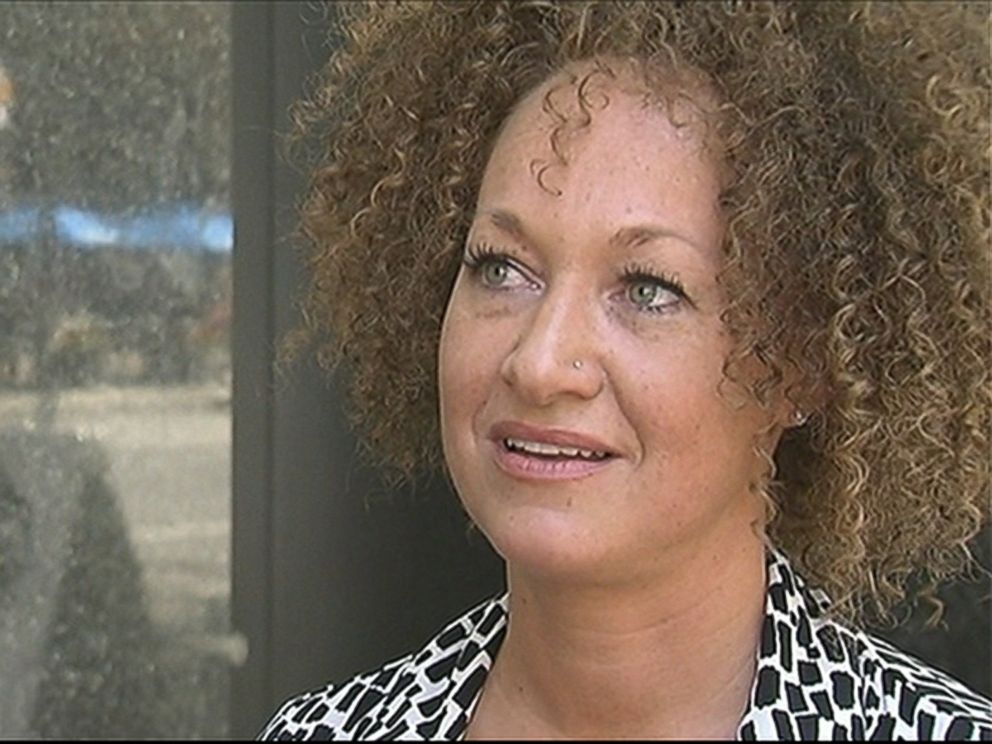A prominent civil rights campaigner is being investigated after it was claimed she had falsely portrayed herself as black for almost a decade.
President of the Spokane, Washington branch of the National Association for the Advancement of Colored People (NAACP), Rachel Dolezal reportedly identified herself as part African-American upon applying for her post on the city’s citizen police ombudsman commission.
But networks including KXLY say public records show her parents are white couple Ruthanne and Lawrence — who subsequently confirmed their daughter is also white.
Her mother told The Spokesman Review the family had Czech, Swedish and German roots, with “faint traces” of Native American heritage — adding that her daughter began to “disguise herself” in 2006 or 2007.
“Rachel is very good at using her artistic skills to transform herself,” she told the Coeur d’Alene Press.
Reacting on Twitter, the London Telegraph’s Timothy Stanley was quick to ask what many were thinking. “What,” Stanley inquired, “is the material difference between #RachelDolezal and Caitlyn Jenner?”
Uh oh.
Comparisons such as Stanley’s are commonly made and commonly dismissed out of hand — usually with much rolling of eyes and condescending tut-tutting. In all honesty, I’m never quite sure why. The standard response from the pooh-poohers is that “gender dysphoria” is scientifically recognized but that “racial dysphoria” is not, and that we should therefore decline to compare the two even in passing. But, even if we accept that premise — and frankly, I’m not entirely convinced; Sean Davis andothers are correct when they suggest that “the long-standing ideas of race as a social construct and gender as a biological construct have been flipped on their heads” here — those who are sympathetic to Jenner will still have a practical problem if people do start claiming in earnest that they feel more comfortable pretending to be what they are not. Why? Well, because our present calls for acquiescence are not predicated principally on the integrity of objective truth but on the perceived need to propitiatethe person who is making the claim. On the front line of these battles, science is frankly an afterthought.
When it comes to those who claim that they are what they do not seem to be, calls for acquiescence are not predicated principally on the integrity of objective truth.
Explaining why she had been pretending to be a black woman, Dolezal wrote that “the question is not as easy as it seems. There’s a lot of complexities . . . and I don’t know that everyone would understand that. We’re all from the African continent.” She is certainly “complex.” A few years ago, while promoting her art, Dolezal claimed to have been born to a black father “in a teepee in Montana,” to have grown up “wearing moccasins” and “planting seeds,” and to have “African-American, Native American, German, Czech, Swedish, Jewish and Arabic” heritage. Most people, she concludes, don’t understand the “definitions of race and ethnicity” that she is using. These are lies, and bold ones at that.
Now, lies are not necessarily delusions, and it is possible that Dolezal is just a good old-fashioned fabricator who will soon disappear in disgrace. But, arguendo, we might ask what will happen if she doesn’t? What if, instead, she elects to press any one of these falsehoods — perhaps hinting that she feels excluded from her “real” heritage, and is maybe suicidal too? Should such a case arise, I find it extremely difficult to believe the reflexive reaction would be “Sorry, the science and the history don’t back you up here, please quit your job and check into a hospital.” Rather, if present trends are any indication, we will likely see exactly the opposite. Instead of explaining why the two are incomparable, our favorite socially conscious types would almost certainly begin to ask, “Well, why does it matter to everyone else what Dolezal believes?”; “Did our unjust society push her into this way of thinking, and isn’t it just as valid as others?”; “Is she likely to kill herself if we tell her she is wrong or offensive or ill?”; “Doesn’t society have a responsibility to adapt so that she feels welcome?”; “Race is just a construct anyway, so why does it matter how people classify themselves?”; “It’s polite to take people at face value”; and, eventually, “Which is worse: a doctor changing her color and our indulging her behavior, or her living in fear and distress?” Then, it having been established that skepticism is closed-minded and even dangerous, the social pressure will start, and at a considerable distance from the original debate.
Today, when someone elects to write a piece rejecting the conceit that Laverne Cox or Caitlyn Jenner are actually “women” in any meaningful sense, they are immediately and vehemently accused of “hatred” and of “bigotry” and of “promoting suicide,” and they are deemed unfit for work and for polite society. In the small number of cases in which they are actually engaged, the zetetics are told haughtily that the science is “settled” and they are then informed that in order to save the lives of those who are suffering, they need to adjust their world view, pronto.
Whatever their pedigree, dissenting scientists are dismissed. Whatever their reputation, inquiring minds are liable to become the victims of roaming mobs of wailers and screamers and hard-ass enforcers who demand the repeating of the catechism as might an inquisitor and who scream like a banshee if they do not get it. Outside its contrived supporting role, sustained argument really doesn’t enter into it. I see no good reason to imagine that it would do so were race to become the fashionable topic, rather than, say, gender, disability, or “otherkin”-ness. The hierarchy of pieties is liable to be changed on a whim, and, when it does, the “science” is liable to follow suit. It will do so again. Just wait.
— Charles C. W. Cooke is a staff writer at National Review.

No comments:
Post a Comment